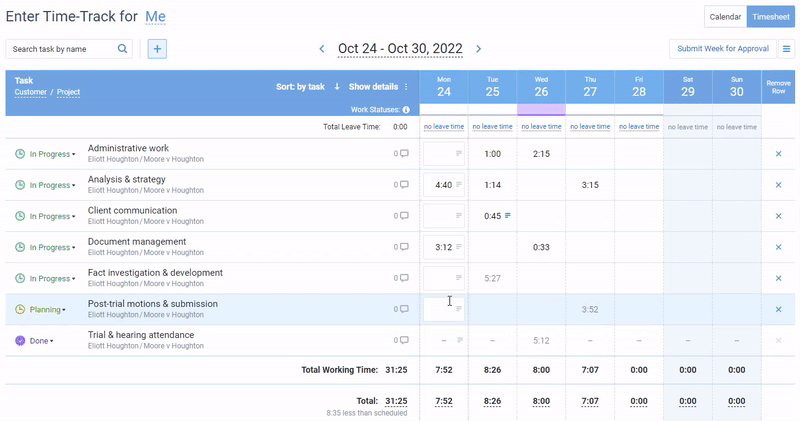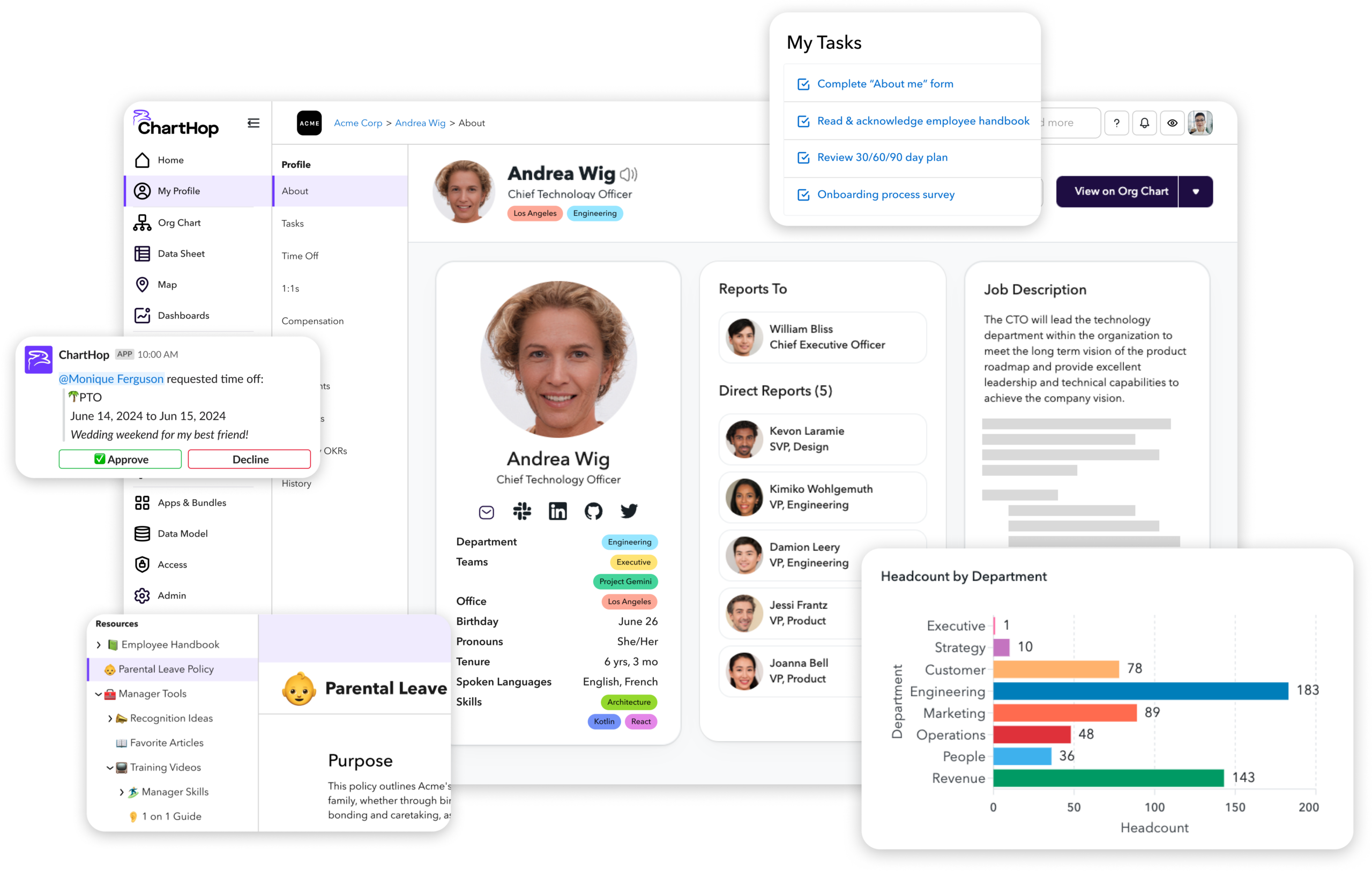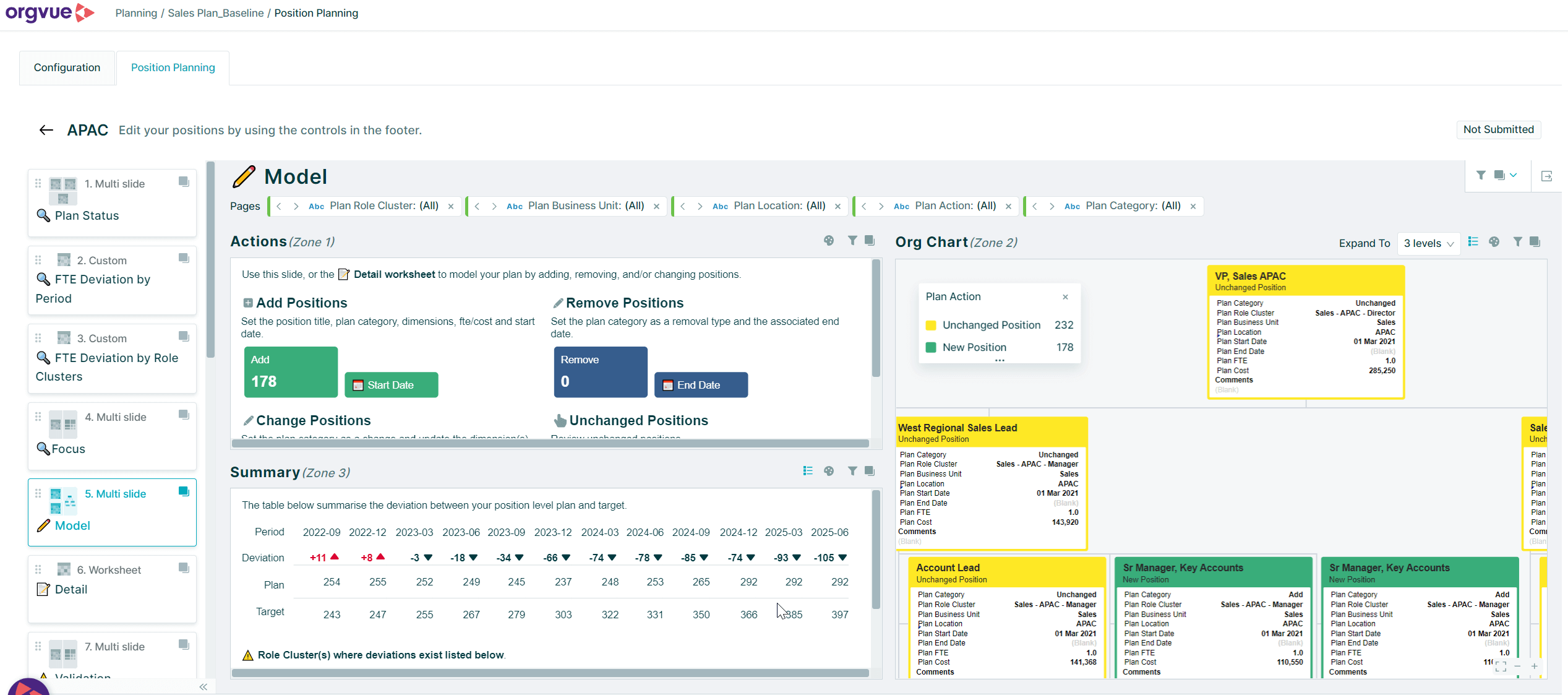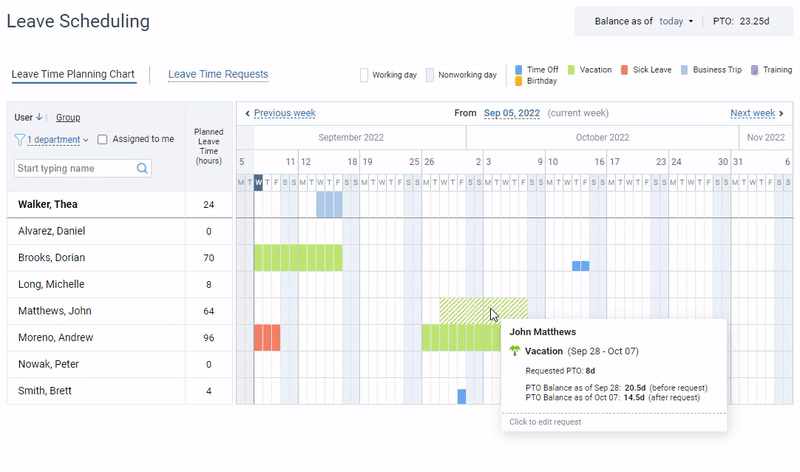
In times when rapid change is the only constant, the art of workforce planning has never been more critical. Hence, we made this guide to demystify the complexities surrounding this topic and help you stay ahead in the game with the best strategies and the right team to execute them.
Whether you’re a small business owner, an HR professional, or a leader looking to scale your team effectively, this guide promises to equip you with the knowledge, best practices, and tools necessary to optimize your workforce for peak performance.
Let’s get started!
Workforce Planning Defined
Workforce planning is an essential strategic process that aligns human resource management with long-term business goals. It involves a careful analysis of current workforce capabilities, future workforce needs, and the gap between the two. This way, it helps to identify the steps necessary to prepare your workforce adequately, using a proactive approach rather than reactive.
Workforce Planning Process (Step by Step)
- Analyze organizational objectives: Understand the current goals and future direction of your business to align workforce requirements accordingly.
- Assess current workforce capacities: Evaluate the skills, experiences, and numbers of current employees to identify gaps or excesses.
- Forecast future workforce needs: Estimate the type, number, and skills of employees needed to meet organizational objectives based on current data and future projections.
- Identify gaps: Compare current workforce capabilities with future needs to identify areas of surplus, shortage, or skills mismatches.
- Develop action plans: Strategize the actions required to bridge the gap between your current workforce and future needs (i.e., changes in hiring, training, staff development, etc.).
- Implement targeted strategies: Execute your action plans, which may include new recruitment methods, team restructuring, advanced training programs, or other HR activities.
- Monitor and improve: Continuously review your workforce planning strategies and outcomes to refine processes and adapt to changes in the business environment or workforce.
What’s the Point of Workforce Planning?
Effective workforce planning addresses a multitude of challenges that companies face in the dynamic landscapes of talent management and operational efficiency. Here are just some of them:
- Talent gaps: Identify current and future skills gaps to focus on targeted recruitment, training, and employee development.
- Turnover rates: Understand workforce dynamics and employee satisfaction to devise strategies that improve retention and reduce turnover
- Succession planning: Identify and prepare competent employees to fill key roles and safeguard yourself against the disruption caused by unexpected departures.
- Labor costs: Make sure your staffing levels align perfectly with the demand for services or products to optimize labor costs.
- Adapting to change: Increase your company’s agility in response to market changes, technological advancements, and emerging business opportunities or threats.
- Diversity and inclusion: Use a strategic approach to building a diverse and inclusive workforce that reflects the community it serves and fosters innovation.
- Compliance risks: Maintain appropriate records and follow the best practices in workforce management to better comply with labor laws and regulations.
4 Best Practices for Effective Workforce Planning
1. Involve diverse stakeholders
Different stakeholders – including employees, management, HR professionals, and even customers in some cases – bring unique perspectives and insights that are crucial for a holistic understanding of the organization’s needs and goals:
- Employees, who are on the front lines, can offer invaluable input on operational inefficiencies and their own engagement in work.
- Managers can provide strategic direction, overall insight into team performance, and opportunities for improvement.
- HR professionals can contribute expertise in talent management and legal compliance.
- Customers can offer perspectives on how staff interactions shape their experience and satisfaction.
This collaborative approach ensures that workforce planning is not done in a vacuum but is a reflective and inclusive process that considers and aligns with the broader objectives of the organization. Thus, it’s essential for creating a well-rounded and effective workforce management strategy.
2. Set clear KPIs
KPIs (or Key Performance Indicators) serve as navigational tools that help to chart your course towards the set strategic goals. They allow you to monitor and evaluate ongoing activities against specific objectives and criteria, facilitating timely adjustments to your workforce management strategies and operations.
In essence, KPIs transform the often-nebulous concept of “success” into quantifiable, actionable metrics. Here are a few examples of KPIs you can use to assess and steer your workforce planning efforts effectively:
- Turnover rate measures the pace at which employees leave the company and provides insight into overall workplace satisfaction and retention efforts.
- Time-to-hire indicates the average time taken to fill a vacant position and measures the efficiency of the recruitment process.
- Employee productivity (often assessed against set benchmarks or performance objectives) helps to evaluate the output per employee and shows how effectively the workforce utilizes its skills.
- Training return on investment (ROI) evaluates the effectiveness of training programs by comparing the cost of training against the productivity and performance improvements of employees.
- Employee engagement score is derived from regular surveys and provides insight into how engaged and motivated employees feel, which directly impacts their productivity and company loyalty.
3. Use reliable data
Reliable data offers a clear understanding of the current workforce landscape. It acts as the grounding force in the midst of fluctuating market conditions and evolving industry trends, turning strategic decisions from pure guesses into well-informed predictions.
Such data-driven insights empower you to align your talent strategy with your business goals efficiently, fostering a resilient and agile workforce capable of thriving in tomorrow’s business ecosystem.
Here are a few data sources to rely on during the workforce planning process:
- Government labor agencies like the S. Bureau of Labor Statistics offer a wealth of data on employment trends, wages, and occupational outlooks.
- Professional networking platforms, such as LinkedIn, provide insights into current workforce trends, skills in demand, and industry networking opportunities.
- Your internal company HR data and reports, encompassing employee retention rates, skill inventories, and performance metrics, offer a personalized perspective for strategic planning.
4. Combine workforce planning with process optimization
Combining workforce planning with process optimization is essential for any business striving to achieve peak efficiency and productivity.
This strategic alignment ensures that your company not only has the right number of employees with the appropriate skills but also that these employees are deployed in processes that have been meticulously designed to eliminate waste and streamline operations. It prevents the common pitfalls of resource underutilization or staff overburdening, paving the way for increased job satisfaction and reduced turnover.
Furthermore, when workforce planning is integrated with optimized processes, your company can become more responsive to market changes and, thus, maintain its competitive edge with greater ease.
Here’s what you can do to optimize processes at your workplace:
- Track employee time to get a better understanding of how resources are allocated, learn to manage workloads prioritize tasks more effectively, and see where efficiencies can be gained.
- Automate repetitive tasks using software tools. This can save considerable time and reduce the incidence of human errors, allowing employees to focus on more critical aspects of their work.
- Implement agile project management techniques to improve workflow, facilitate swift responses to changes, and promote continuous improvement and collaboration throughout the project lifecycle.

Track the time spent on each project and task using the traditional weekly timesheets, calendars, or automatic tools by actiTIME.
8 Best Workforce Planning Tools
1. Agentnoon
Key features:
- Org design and visualization
- Real-time analytics
- Operating models
- Integrations
Agentnoon is a robust workforce planning and organizational design software aimed to improve the way you strategize your human resources and structural planning. It offers tools to effectively forecast workforce requirements, optimize team structures, and ensure that the right people are in the right roles
Agentnoon leverages data analytics and visualization to assist you in decision-making. Here are just some of its features that allow for more strategic and informed organizational planning:
- The centralized people data management system acts as a single source of truth, simplifying the way you track and manage employee information. Such centralization ensures data accuracy, improves compliance, and facilitates analysis.
- The “what if” scenarios let you simulate various personnel-related situations, helping to foresee and mitigate potential challenges.
- The demand and supply gap visualization tools enable you to identify talent shortages or surpluses at a glance and maintain optimal staffing levels.
- The activity cost analytics functionality provides valuable insights into the financial impact of your work processes and makes it easier to streamline operations and reduce unnecessary expenditures.
Best for:
Org design and visualization.
G2 rating: 4.7 (17 reviews)
Price:
- $699 per user/month for the Standard plan.
- Custom price for the Enterprise plan.
2. Anaplan
Key features:
- “What if” scenarios
- Cost analysis
- Talent strategy
- Compensation modeling
Anaplan is an enterprise planning and performance management platform that enables you to perform complex planning and decision-making more efficiently. It combines such areas as finance, sales, supply chain, and HR, allowing for in-depth data analysis and forecasting.
Here are some of Anaplan’s features you can use to tackle complex workforce challenges:
- Workforce gaps enable you to identify skill shortages and anticipate hiring needs by analyzing current workforce data against future business demands.
- Bottom-up workforce planning lets you create and compare multiple succession scenarios and get prepared for various potential changes in key roles.
- Compensation modeling empowers your HR and finance teams to keep your budget in check while ensuring competitive salary offerings, linking compensation directly to performance and business outcomes.
Best for:
Financial HR analysis against your overarching business goals.
G2 rating: 4.6 (343 reviews)
Price:
Custom price based on your company’s needs and characteristics.
3. ChartHop
Key features:
- People analytics
- Org charts
- Employee engagement management
- Visual headcount plans
ChartHop is a smart workforce management platform that integrates with your existing HR, payroll, and equity systems to create an interactive, visual map of your entire organization. It facilitates strategic planning, improves decision-making regarding personnel changes, and enhances transparency across the company.

ChartHop offers an array of powerful features:
- Workforce cost modeling empowers you to compare the financial impact of different workforce planning decisions and make data-driven choices about hiring and budget allocation.
- Employee engagement surveys assist in gauging employee sentiment and engagement. They help to identify areas of improvement and implement targeted strategies to boost morale and productivity.
- 360-degree performance reviews provide a comprehensive evaluation of employee performance from a variety of perspectives. They make it easy to locate personal strengths, areas for improvement, and opportunities for professional development, fostering a culture of continuous improvement and growth.
Best for:
Holistic headcount planning based on seamless cooperation among stakeholders.
G2 rating: 4.2 (107 reviews)
Price:
No information is available on the website.
4. iMocha
Key features:
- Skill gap analysis
- Skills inventory
- Career planning
- HR integrations
iMocha is a comprehensive skill assessment platform that aids in evaluating and identifying the competencies of potential and current employees. It offers a wide range of skill validation tools, enabling you to measure your team members’ capabilities accurately and improve the hiring and training processes.
iMocha enhances talent management thanks to the following features:
- The centralized skills hub offers an extensive repository of your employees’ competencies and helps to identify and deploy the necessary expertise efficiently.
- The skill gap analysis feature empowers you to pinpoint the lack of expertise and implement targeted interventions. It ensures that training and development efforts are precisely directed, maximizing effectiveness and fostering continuous growth among employees.
- Skills benchmarking enables you to measure your workforce’s competencies against industry standards or competitors. It shows where you stand in the market and prompts you to become more competitive.
Best for:
Skills-first approach to talent acquisition, development, and retention.
G2 rating: 4.4 (247reviews)
Price:
- Free trial.
- No pricing information is available on the website.
5. Orgvue
Key features:
- Workforce simulations
- Org design
- Data visualization
- Talent mapping
Orgvue leverages data analytics and visualization for smarter decision-making regarding your organizational structure, talent allocation, and transformation initiatives.

Orgvue’s features are crafted to provide clear insights and simplify organizational development:
- Organizational charts are dynamic, data-driven visual representations that offer real-time views of the entire company structure. They allow you to easily identify key personnel, understand reporting relationships, and spot opportunities for optimization.
- Visual data management features turn complex datasets into intuitive, understandable visuals. They help uncover hidden patterns, trends, and anomalies and ensure that the gained insights are accessible to all stakeholders, regardless of their technical expertise.
- Workforce modeling lets you simulate various scenarios, assess the impact of potential changes, and make adjustments before implementing any of them in the real world.
Best for:
Visual data analysis and workforce tracking.
G2 rating: 4.4 (14 reviews)
Price:
Contact Orgvue for pricing details.
6. Planful
Key features:
- “What if” scenarios
- Collaborative planning
- Talent gaps
- People cost analysis
Planful is a cloud-based solution for financial planning and analysis. It aims to streamline budgeting, forecasting, reporting, and financial consolidation processes, helping you drive end-to-end financial decision-making within a cohesive, automated environment.
Planful’s workforce planning features help to align your company’s finances with HR needs:
- Collaborative workforce planning enables leaders from multiple departments to work in unison, ensuring all staffing decisions are made with a comprehensive understanding of the company’s objectives and resources.
- Reporting tools allow for the integration of varied data sources (e.g., financial and operational) and foster a holistic approach to talent development and budgeting.
- Predictive analytics assists in headcount optimization by letting you match your staffing needs with the set business objectives without overextending your financial resources.
Best for:
Tackling the financial side of workforce management.
G2 rating: 4.3 (385 reviews)
Price:
Contact Planful to get a quote.
7. Trace
Key features:
- Centralized data management
- Handy software integrations
- Budget objectives
- Headcount timelines
Trace is a cutting-edge workforce planning software for easily identifying your staffing needs, forecasting future demands based on industry trends, and crafting efficient staffing strategies.
Here are just a few Trace features that simplify workforce planning:
- The headcount timeline gives a visual representation of changes in staffing levels over time. It assists HR professionals in understanding trends in employee turnover and planning for future recruitment needs.
- The hiring tracker simplifies the recruitment process by allowing you to monitor the status of each candidate, from the initial application to the final hiring decision.
- Integrations with HR software and applicant tracking systems (ATS) foster a seamless data flow and reduce the need for manual data entry.
Best for:
Centralized workforce management (as a substitute for spreadsheets).
G2 rating: 4 (1 review)
Price:
- The Starter plan costs $2 per position/month.
- The Pro plan costs $5 per position/month.
- The Enterprise plan has a custom price.
8. Visier
Key features:
- AI-powered people analytics
- Performance benchmarking
- Skills intelligence
- Compensation planning
Visier is a cloud-based workforce intelligence platform that empowers you to tap into accurate data and gain insights into workforce dynamics, trends, and predictive scenarios.
Here’s how Visier helps:
- Skills intelligence leverages advanced algorithms to map out the skills landscape within your organization, identify gaps, and predict future needs. It helps to stay ahead of industry demands and make sure you have the right talent in place at all times.
- People analytics offers deep insights into workforce dynamics, performance metrics, and employee sentiments. This analytical power translates into a strategic advantage, allowing you to understand and optimize the complex interplay of factors that influence employee success.
- Collaborative workforce planning equips you with tools to align different teams on strategic objectives by providing a shared, transparent view of workforce analytics and scenarios.
Best for:
Agile, AI-powered workforce planning.
G2 rating: 4.6 (125 reviews)
Price:
No information is available on the website.
Bonus tool: actiPLANS
Key features:
- Time off management
- Visual timelines
- Location tracking
- Shift scheduling
- Absence reports
- Mobile app
- Time tracking integration
- iCal integration
actiPLANS stands out as a superior alternative to specialized workforce planning software due to its flexible functionality and user-friendly design that makes employee scheduling and time off management a breeze.

Here are some actiPLANS features that might come in handy in workforce planning:
- The straightforward time off tracking system perfectly aligns with your custom rules to simplify the management of different leave types of your choice.
- The intuitive visual timeline makes scheduling based on location, shift, activity, or event a hassle-free process and ensures optimal staffing levels at all times.
- Robust absence reports aid in trend analysis and workforce capacity predictions.
- actiTIME integration enhances these capabilities by providing real-time performance management and offering a comprehensive view of team productivity and efficiency.
Best for:
A simple, flexible approach to workforce planning and tracking.
GetApp rating: 4.6 (11 reviews)
Price:
- Free 30-day trial.
- Free version for 1-3 users.
- Paid plans start at $1.2 per user/month.
Conclusion
Effective workforce planning is pivotal for any organization aiming to thrive in today’s competitive business landscape. By adhering to best practices and leveraging the right tools, you can rest assured that you have the right people, with the right skills, in the right place, at the right time.
actiTIME can further contribute to this process due to its comprehensive suite of features that facilitate task management, time tracking, and productivity analysis.

By integrating actiTIME into your workforce planning strategy, you’re not just investing in a tool – you’re investing in your team’s future success.
Start with actiTIME today to optimize your team’s performance and enjoy superior project management outcomes.

















































